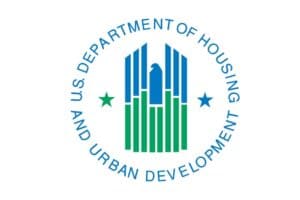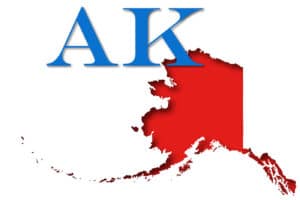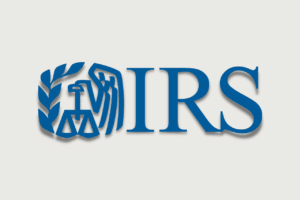Federal / Agency News

HUD Offers Lead Safe Housing Rule Trainings and Resources
HUD’s Office of Lead Hazard Control and Healthy Homes launched new training and web pages to help users review federal lead regulations and the Lead Safe Housing Rule Amendment for pre-1978 housing. The goal of these pages is to help Public Housing Agencies, grantees and owners respond to cases of elevated blood lead levels in […]

HUD Publishes Puerto Rico’s CDBG-MIT Notice
HUD recently published a Community Development Block Grant Mitigation (CDBG-MIT) notice for the Commonwealth of Puerto Rico, which allocates $8.285 billion. The notice lists out guidelines for the CDBG-MIT program specific to Puerto Rico, which will enable them to develop and submit for approval their plans and ultimately receive their allocated mitigation funds.

Annual Assessment Shows Three Percent Increase in Homelessness Nationwide
HUD released its 2019 Annual Homeless Assessment Report to Congress, which found that 567,715 persons experienced homelessness on a single night in 2019, a three percent increase over 2018. Homelessness among veterans and families with children continued to fall, declining 2.1 percent and 4.8 percent, respectively, in 2019.

Treasury OIG Launches Opportunity Zone Investigation
The Inspector General of the U.S. Department of the Treasury launched an internal investigation on abuse in the Opportunity Zone program. Rich Delmar, the department’s acting inspector general, said in a statement he expects “to complete our work and respond to the congressional requesters in early spring.”

FHA Reiterates Green Building Standards Program
In 2016, the Federal Housing Administration’s (FHA) Office of Multifamily Housing Programs introduced a voluntary green building standards program that allowed for a reduced annual mortgage insurance premium (MIP) at the rate of 0.25 percent for properties that are committed to green building practices. The reduced MIP for industry-recognized green housing encouraged owners to adopt higher standards for construction, rehabilitation, repairs, maintenance and property operations.

Senators Introduce Bill to Focus NMTC Allocation on Indian, Native Lands
A bipartisan group of four Senators recently introduced a bill that would require that ten percent of the annual New Markets Tax Credit (NMTC) allocation be made to community development entities (CDEs) for investment in developments in Indian and Native lands

House Financial Services Committee Announces January Hearing Schedule
Congresswoman Maxine Waters (D-CA), Chairwoman of the House Financial Services Committee, announced several updates to the Committee schedule:
January 29 at 10:00 am ET – The full Committee will convene for a hearing entitled, “The Community Reinvestment Act: Is the OCC Undermining the Law’s Purpose and Intent?”
January 29 at 2:00 pm ET – The Subcommittee on Housing, Community Development and Insurance will convene for a hearing entitled, “Examining the Availability of Insurance for Nonprofits.

House Passes Seven Financial Services Bills
The U.S. House of Representatives passed the following financial services bills to support veterans, benefit investors, provide housing opportunities, hold regulators accountable, promote Minority Depository Institutions (MDIs) and improve cybersecurity:

HUD Publishes Proposed AFFH Rule
This week, HUD released a proposed rule on Affirmatively Furthering Fair Housing (AHHF) that would dramatically alter the Obama administration’s final rule published in 2015. The rule changes the definition of AFFH and eliminates the community participation and engagement requirement as well as the requirement that federal grantees complete an analysis of impediments to fair housing. Comments on the proposed rule are due 60 days after its publication in the Federal Register.

Treasury and IRS Issue Final Regulations on Opportunity Zones
The U.S. Department of the Treasury and Internal Revenue Service (IRS) issued final (and proposed) regulations on the Opportunity Zones (OZ) tax incentive. The regulations modify and finalize the two previous proposed regulations that were issued in October 2018 and April 2019. The Treasury notes that “the final rules provide clarity for Opportunity Funds and their eligible subsidiaries in determining qualification and levels of new investment in Opportunity Zones.”

HUD Proposes to Track PBV Data
As RAD conversions continue to drive Project Based Voucher (PBV) growth, HUD proposes to fill an information gap to enable monitoring, tracking and analysis of PHAs’ PBV performance. Comments are due February 24, 2020.

Freddie Mac White Paper Details Efforts to Preserve Affordable Housing as Areas of Concentrated Poverty Are Revitalized
A new white paper released by Freddie Mac details how communities can use mixed-income and social impact housing to stimulate economic growth and diversity while preserving affordable housing. The research examines properties in areas of concentrated poverty, which are areas designated by the Federal Housing Finance Agency that are characterized by disinvestment, persistently high poverty levels, low economic opportunity and high housing costs relative to income.